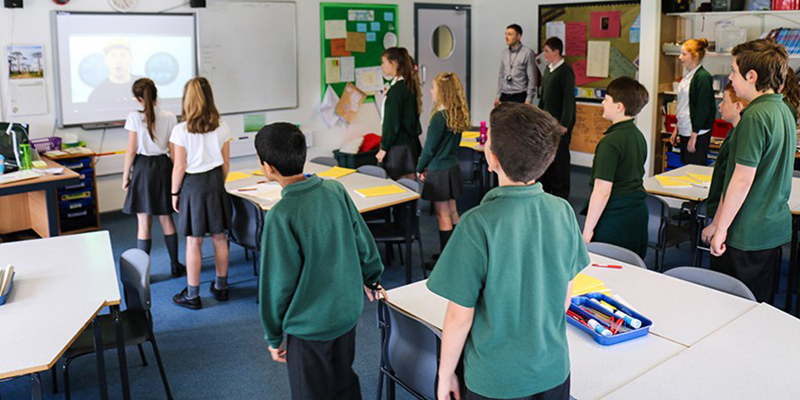
Primary school aged children spend the majority of their waking hours at school where between 50-70% of time is spent sitting, particularly in the classroom.
NCSEM-EM researchers from three of our partner universities, Leicester, Loughborough and Nottingham, investigated whether getting pupils to move around more in class could encourage them to sit less and improve their learning experience.
The team worked with Year 5 teachers and their pupils in seven Leicestershire schools on the CLASS PAL (Physically Active Learning) project to help them incorporate ‘physically active learning’ into their daily lessons.
Physically active lessons (delivering curriculum topics through movement) and physically active breaks have been shown to have positive impacts in the classroom and on educational outcomes. However, little is known about the science of implementing this into routine teaching practice.
An early pilot was carried out in Leicestershire schools to understand how teachers can best implement active learning and movement breaks in class.
The research is being funded by the National Institute for Health Research Collaboration for Leadership in Applied Health Research and Care East Midlands. This is a partnership of regional health services, universities and industry which turns research into cost-saving and high-quality public health initiatives.
Dr Lauren Sherar from Loughborough University’s School of Sport, Exercise and Health Sciences and the NCSEM-EM is the lead investigator for the project. She said: “Schools have a unique opportunity to change the modern culture of sitting, by introducing active breaks and teaching through movement.”
Sally Gambles, Year 2 teacher said: “It has been really interesting to see how teaching through physical activities has impacted on the children’s learning. It has been especially effective for those who find the more formal methods of schooling difficult. Active learning is now something that is embedded in my daily teaching.”